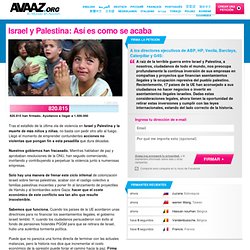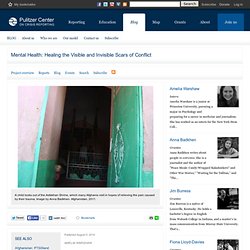

Video - Restorative Circles. For video news reports on Restorative Circles, please visit the Press page, and scroll to the end.

A short video on Restorative Circles by the University of Rochester An Introductory talk on Restorative Circles It is common for our responses to conflict to be organised around the desire to bring security and healing to those involved, and thus to focus on resolving conflict. This seems obvious only because it is a given for most people that conflict is problematic. The damage - to lives, to relationships, to the well being of the community - that the violent expression of conflict can inflict may support this view of conflict as something dangerous, that must be controlled. But the violent expression is not the conflict itself. Restorative Circles take therefore a significantly different, though no less dynamic and engaged, approach. Restorative Circles engage non-adversarily with the complex and often intense reactions to what was done. Please share your thoughts and join the conversation. Resource / Restorative Justice Council.
Related Items The Restorative Service Standards read more.

RSQM Data Monitoring and Collection Templates read more. Level Four Diploma in Restorative Practice from City and Guilds read more. RJC Practitioner Registration Consultation read more. Practitioner Register - Test 2014 read more. Events. Peacebuilders - United Network of Young Peacebuilders. Millennials Seek Workplace Volunteer Opportunities, Survey Finds. Israel y Palestina: Así es como se acaba. Tras el estallido de la última ola de violencia en Israel y Palestina y la muerte de más niños y niñas, no basta con pedir otro alto al fuego.

Llegó el momento de emprender contundentes acciones no violentas que pongan fin a esta pesadilla que dura décadas. Nuestros gobiernos han fracasado. Children paying a terrible price in Gaza - Washington Post. Could you avert a political crisis in 30 minutes? She did… Sanju Kumari Das is a petite, soft-spoken woman, but don’t let that fool you.

In a region where women’s voices are rarely heard, this formidable 27-year-old commands the attention of political giants. Sanju produces and hosts one of our thirty-minute radio talk shows in Nepal, Wider Earth. While many shows hook listeners by inciting fights between guests, we trained Sanju to do just the opposite. She empowers the parties of a conflict to break through stalled, destructive fighting to find a solution, and even reconcile. 84% of Wider Earth episodes lead to an agreed solution between the guests. “It’s challenging to get people of opposing sides to come to an agreement, but it’s truly rewarding when it happens,” explains Sanju.
While she doesn’t exaggerate the program’s impact—“one episode isn’t going to change everything,” she says—she can recite an impressive list of resolutions, such as helping resolve a strike. Nepal is treading a tenuous path to peace. Ending the social acceptability of sexual harassment and assault in Egypt. Healing the Visible and Invisible Scars of War. “The entire country needs therapy,” a Syrian told Karen Leigh of the New York Times.

Syria’s mental health crisis is an expected, and perhaps inevitable, consequence of prolonged conflict in the region. Millions of refugees have fled to Lebanon, Turkey, and Jordan, leaving their homes behind but bringing with them the visible and invisible scars of conflict. “Mass displacement, daily violence and the death of loved ones are leading to a mental health epidemic among Syrians,” Leigh reports. The article, published on August 1, 2014, cites a study by the International Medical Corps, which revealed that nearly a third of these individuals are suffering from severe emotional disorders and 20 percent have depressive or anxiety disorders. Untreated mental illnesses don’t only affect the individuals who suffer—they affect the society as a whole. The Neuroscience of Social Conflict : Alliance for Peacebuilding. Resilience in Children Exposed to Trauma, Disaster and War: Global Perspectives. About the Course Children around the world experience severe adversity in different forms, including maltreatment, disaster, war, and terrorism.

Some children manage to adapt and recover, showing resilience, while others do not. What do we know about resilience and how to protect child development in the face of potentially life-altering adversities? This course will examine the global literature on resilience in children and youth, with a focus on core concepts, methods scholars use to study resilience, highlights of lessons learned from half a century of research, and applications to promote resilience in children whose lives are threatened by extreme adversity.
Course materials will examine multimedia biographies as well as research studies on the effects of common and rare traumatic experiences on child development. Travail des enfants et conflits armés. Enfants associés aux forces et groupes armés Des dizaines de milliers de filles et de garçons se retrouvent à combattre dans des guerres d’adultes dans au moins 17 pays à travers le monde.

Certains sont utilisés comme combattants et participent directement à des hostilités tandis que d’autres sont utilisés dans des fonctions d’appui logistique (cuisiniers, porteurs, messagers ou espions) ou à des fins sexuelles. Ils sont enlevés, recrutés de force ou décident personnellement de s’enrôler (par exemple pour survivre, pour trouver protection ou par vengeance). Cependant l’analyse de ces initiatives personnelles indique clairement que ces enfants ont été pris sous la contrainte et dans l’ignorance des conséquences. L’utilisation des enfants dans les conflits armés est une pire forme de travail des enfants, une violation des droits de l’homme et un crime de guerre. Autres pires formes de travail des enfants en situation de conflits Links. Niños, niñas y adolescentes víctimas con protocolo para el pleno ejercicio de sus derechos.